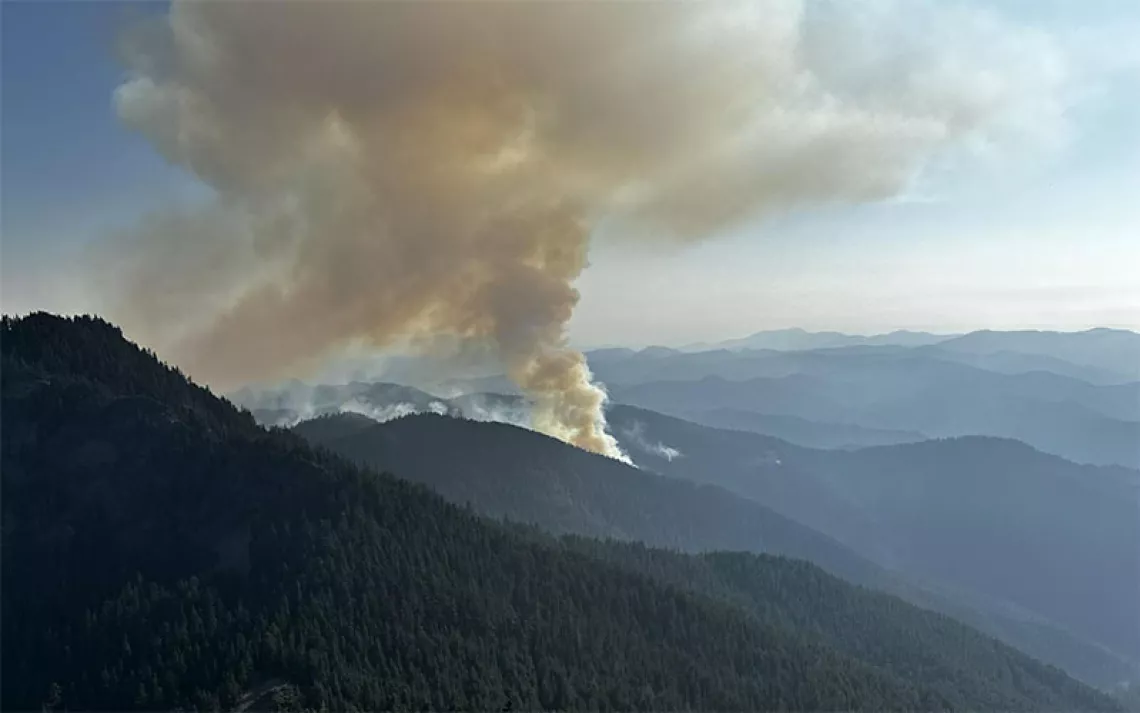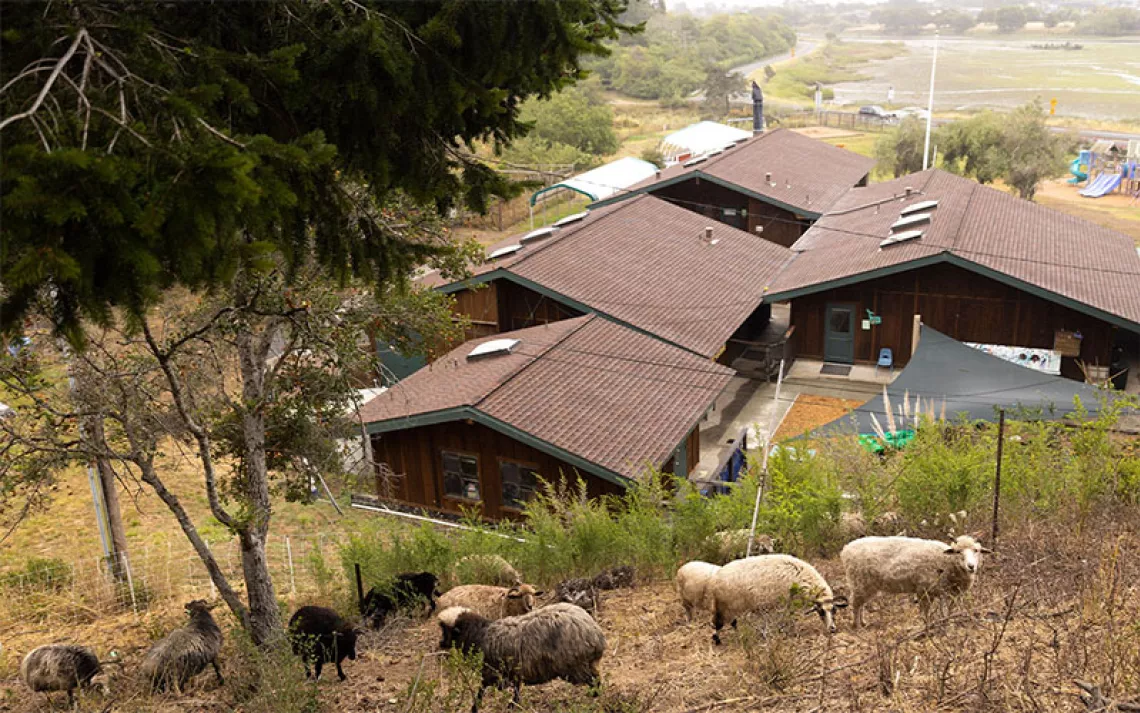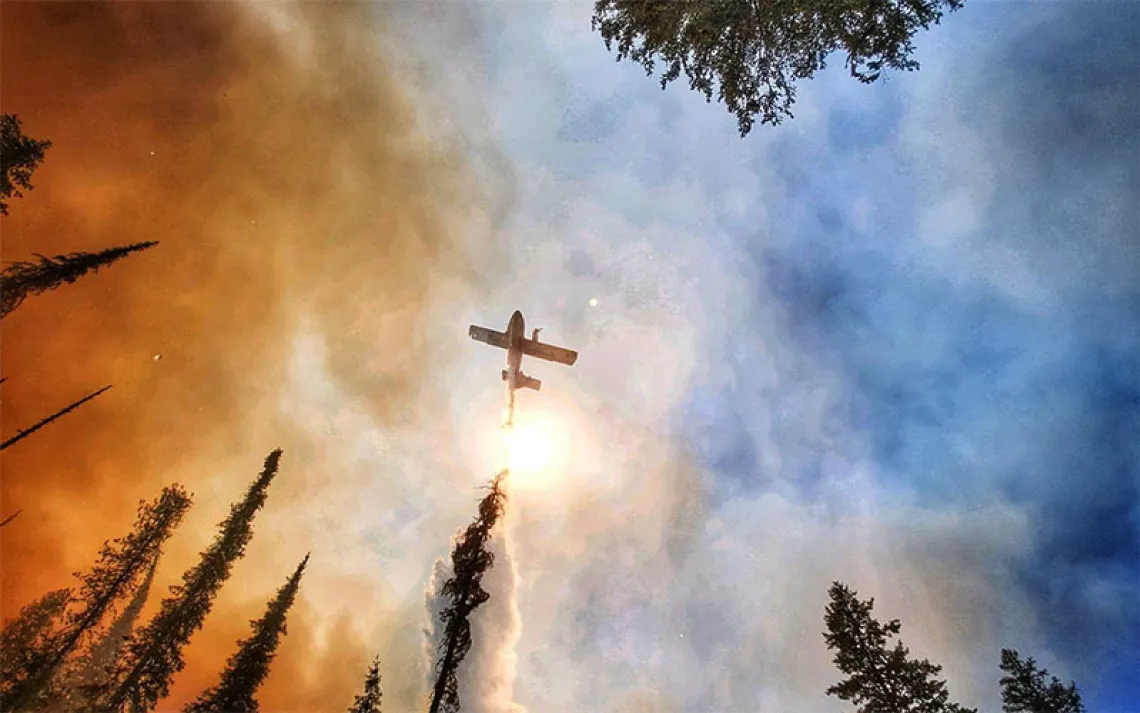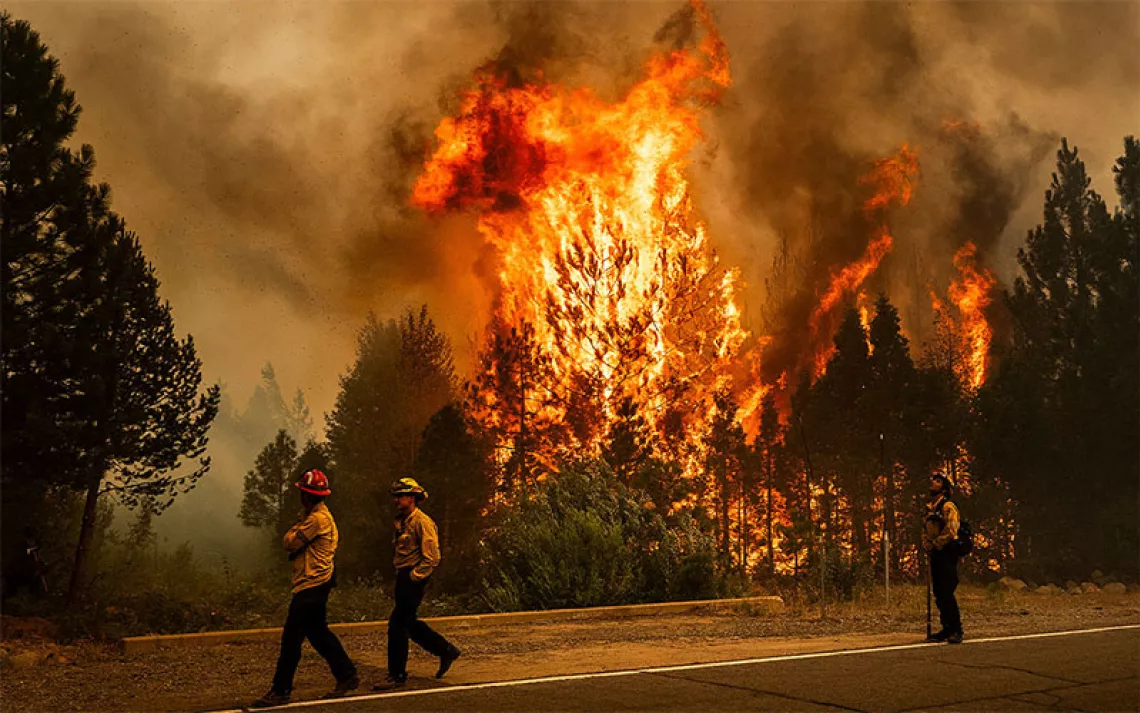ENVIRONMENT EXPLAINED
The Northeast Is Becoming a Tinderbox
Here’s everything you need to know about the region’s record-breaking drought conditions and unusual wildfires
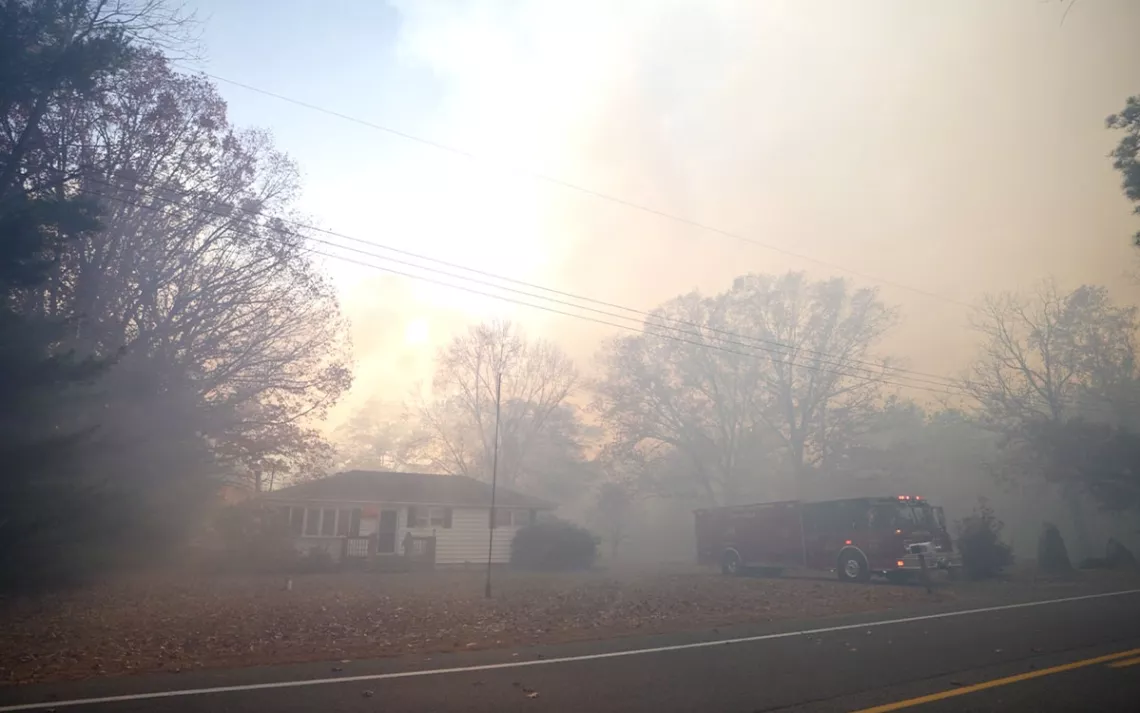
A forest fire fills the air with smoke on November 6 in Evesham, New Jersey. | Photo courtesy of New Jersey Department of Environmental Protection via AP
Since early October, hundreds of wildfires have burned across the Northeast, as the region experiences unseasonably warm and dry weather. The Jennings Creek Fire, which happened near the border between New York and New Jersey, scorched over 5,000 acres of land. There are more than 20 wildfires still blazing in Massachusetts. Connecticut, Pennsylvania, and Rhode Island are also burning.
None of these places are typically considered “fire country,” but an increasingly unpredictable climate and a fire-suppressed landscape that is now more likely to ignite make this much clear: Wildfires will become more common in the Northeast. Here's everything you need to know about the drought, the resulting wildfires, and the future of the region.
A record-breaking dry spell
For the past few weeks, over 90 percent of the Northeast has been experiencing some level of drought. “The conditions we’re seeing are nothing like normal for this time of year,” said Rich Tinker, a meteorologist at the National Oceanic and Atmospheric Administration. “This is probably the biggest rainfall shortage I've seen in this part of the country, for a few months’ period—and I've been doing this for decades now.”
The current conditions, explained Tinker, are the result of a high-pressure system over the Great Lakes region. These systems have more air pressure than their surroundings, which causes them to push the air around them away. That creates a block for approaching storms, and prevents the formation of clouds, suppressing rainfall.
While Tinker says there’s currently no reason to attribute this current weather pattern to climate change, research does project that climate change will cause droughts to become more frequent and severe in the United States overall.
To put it simply, a drought is a lack of precipitation over an extended period of time that leads to a water shortage. But actually defining a drought is a little more complicated in practice, said Tinker. Experts at the US Drought Monitor will look at a combination of decreased precipitation and its social, environmental, and economic impacts. New research also shows that drought can be caused by extreme heat drying the air in areas that are otherwise receiving normal precipitation, a phenomenon scientists are calling “hot drought.”
If we just look at rainfall in the Northeast right now, we’re looking at “a pretty stark situation,” said Tinker. The potential impacts are greater for small towns that manage their own water, especially as water reservoirs throughout the region reach record lows. Farmers are also concerned about how the lack of water might affect next year’s yields, because some crops need moisture over winter. But the timing of this drought means to date there haven’t been any significant crop losses, and major water supplies aren’t at risk of running out.
Fuel for fire
The spate of wildfires in the Northeast this fall exist within an important historical context, said Tim Brown, a professor at the Desert Research Institute in Nevada. Up until the 1900s, wildfires were a common part of the region’s landscape. For centuries, Indigenous communities also practiced controlled burning, using fire to manage land, control pests, promote the growth of certain species, and more.
But as colonization changed the landscape and settlers came to see timber as an economic resource, they suppressed fire. Those fuels—any combustible materials, such as trees, grass, or fallen branches—have been building up for decades. “That’s one of the reasons we have such large fires now,” said Brown.
All this dry weather, along with all this fuel, create the perfect conditions for wildfires to start and spread.
Climate, vegetation, and ignition sources are the three factors that influence wildfire at large scales, explained Victoria Donovan, an assistant professor of forest management at the University of Florida. “In the East, we have the fuels available, and we have shifting climate patterns, which are potentially increasing the availability of those fuels and creating conditions that are more conducive to wildfires,” she said.
Extreme oscillations increasingly define the Northeast’s climate: It’s getting warmer and wetter, with flood risk increasing, at the same time that dry episodes are becoming more common as well. This will increase the risk of wildfires, said Donovan. All the vegetation that was able to grow because of more rain becomes fuel for fire once it dries out.
Because of the Northeast’s expansive wildland-urban interface—think of suburban homes near a large forest—there are also many potential ignition sources, she explained: downed power lines, campfires, burning debris, cigarette butts, and more. Altogether, humans cause nearly 85 percent of wildfires in the United States, according to the National Park Service. And because of all that intermingling between human development and wildlands, those fires can reach humans much faster than in the West.
That can lead to one of two outcomes. If a fire is ignited close to human development, firefighters might be faster to reach it and put it out. It also means, however, that there’s more potential for damage to human structures. A fire in the middle of a forest that’s not close to any development is far less likely to impact humans than one that’s right near a town, said Donovan.
What’s next for the Northeast's fire management?
The Northeast will need to adapt and learn to manage fire differently than it does currently. Parts of the region got some rain last week, but not nearly enough to put an end to the drought, or to the risks of wildfire. It will take weeks of rain to resaturate dried woods, said Dan Sullivan, the fire chief of Lynn, Massachusetts, where a wildfire burned more than 400 acres at Lynn Woods Reservation, a large urban park about 15 miles north of Boston.
Last week, New York City announced the creation of a brush fire task force in response to the increase in fires happening across the city. One was a forest fire in Prospect Park, a large park in the borough of Brooklyn, where a little less than two acres of woodlands burned earlier this month. More proactive methods of forest management, said Donovan, like mechanical tree thinning, can also help.
Fire can be good, stressed Donovan. Prescribed burning is one of the most effective ways to reduce fuel loads and wildfire risk. Many places in the Northeast, such as Massachusetts and New Jersey, already have prescribed burning programs, which are becoming more common. But these programs can be hard to manage in urban settings—officials need to consider the health impacts of smoke and road visibility. Christian Zimmerman, vice president of capital and landscape management at the Prospect Park Alliance confirmed prescribed burns “aren’t even on the table.” Prospect Park is now working to restore the affected area with native, climate-adapted species.
“Fire is a natural part of the system in the United States,” said Donovan. “We can choose whether we want those fires to be outside of our control, or we can start using prescribed fires more widely to better coexist with fire within our landscapes.”
 The Magazine of The Sierra Club
The Magazine of The Sierra Club
